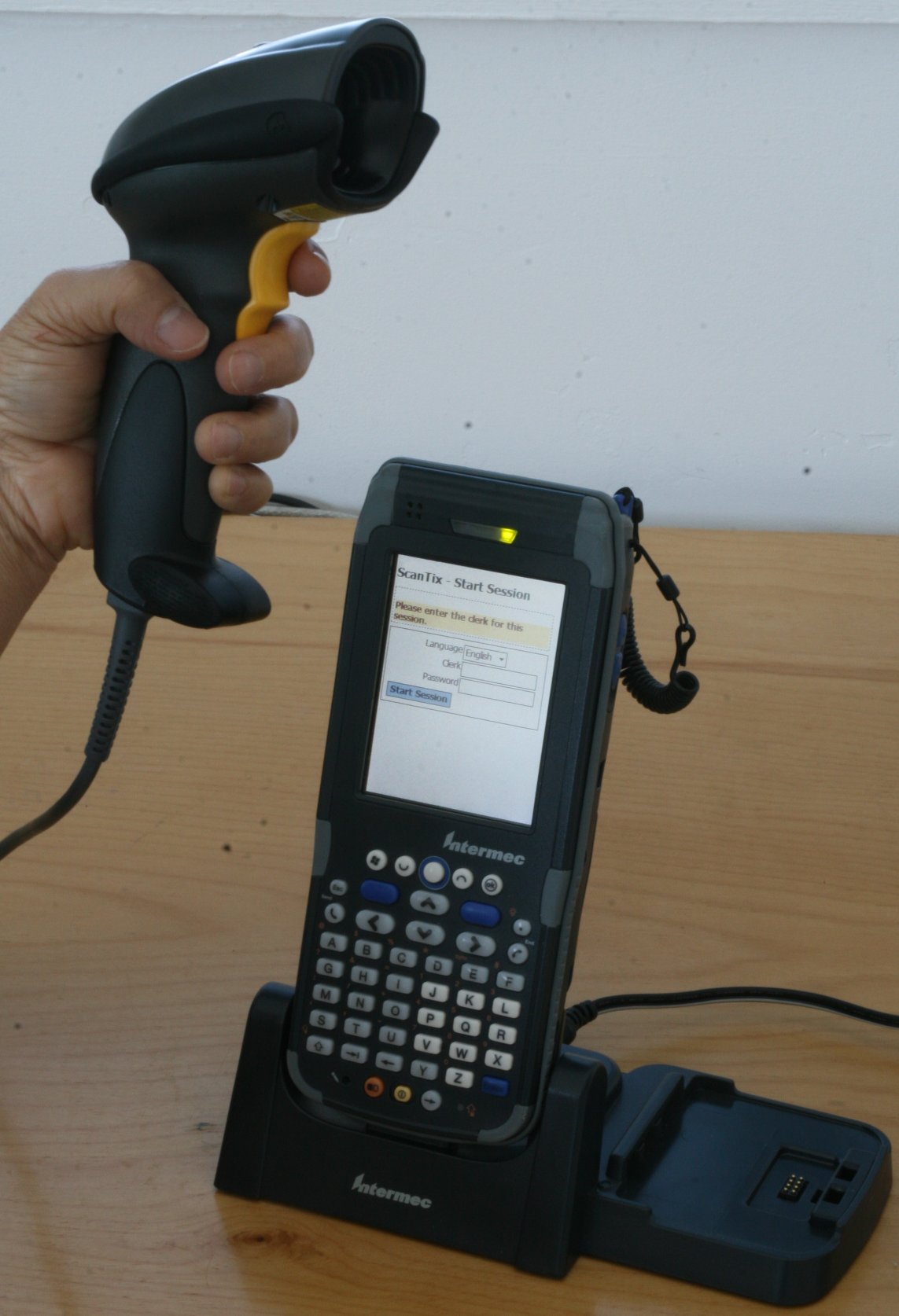(Last updated on: March 15, 2021)
ScanTix – for Bar Code Scanning
Notes:
Scanning tickets with bar codes is a subject of interest to some of our customers. Like all technology, it is not without its quirks.
Advantages:
- Elimination of any problem with counterfeit tickets.
- You get a list of who attended. Can be valuable in a situation with charge backs where someone claims they did not attend.
- You also get a list of who did not attend. If a season ticket holder is not attending the performances, they will probably not renew their subscription. You need to contact them and find out why.
Disadvantages:
- The cost. 2D Scanners with a USB cable are about $450. These plug into a laptop on a table next to the entrance.
Wireless scanners are about $2,400. To that, you need to add a wireless network or wifi setup so you and your customers don’t trip over network cables. - You need to have two people at each entrance. One will scan the tickets. The second will handle any problems that come up.
- You are depending on technology at a time of high stress.
Conclusion:
The main justification is a counterfeiting problem. For most of our customers, counterfeit tickets is a problem they would like to have. The alternative to bar code scanning is a portable table with a couple volunteer ushers.
ScanTix has several functions when used with Wintix and Webtix:
- Tickets are printed with a bar code that consists of the ticket identifier plus a random identifier.
- When scanned at the door, the tickets are checked for the following:
a) Correct performance
b) Ticket has been previously scanned in
c) The random identifier matches what is on the server
- Tickets can be scanned out if the patron wishes to leave.
- Tickets can have some of their sale information checked with the status function. This returns the customer’s name, address, and date and time they purchased the ticket.
- The sale number alone can be entered when checking the ticket status. This returns the same information as a regular scan.
- If the bar code is unreadable (they left the ticket in a hot car), the scanned code can be entered directly. This will let the customer in. For this to happen, the human-readable text must be printed on the ticket.
Requirements for scanning:
- A computer to display the ScanTix entry screen
- The bar code reader to enter the data into ScanTix
- The data connection to send the scan to the server, submit it and send the results back
- A computer to display the results
The 2 methods for this are wired and wireless.
A wired scanner, plugged into a laptop, connected to the network is all you need to start. The only item you usually need to purchase is the scanner.
Wireless scanning combines all 4 requirements into 1 hand held unit. A wireless scanner also requires a connection to the network.
- This can be an “access point” (about $300) to connect to your local network.
- Wireless scanners can also be fitted with a SIM card to connect to the cell phone network in your area.
- You want an SSL certificate to insure that the transmissions are encrypted. This is to prevent someone in the parking lot with a laptop also sending “scan out” commands when their friends get scanned in.
If you want to save money, a 1D scanner may be sufficient. 1D bar codes are the old fashioned “ladder” bar codes. 1D bar codes are larger. You may have enough room on your tickets for the 1D bar codes. If so, 1D will save you money.
2D bar codes are generally squares filled with dots. They contain much more information (the datamatrix bar code can store up to 2K of data) and have better error checking. If you are going to be sending bar codes to cell phones, 2D is the way to go.

